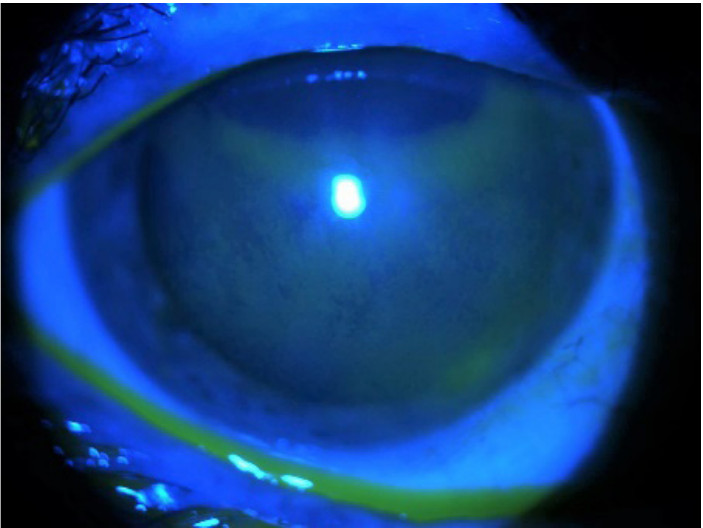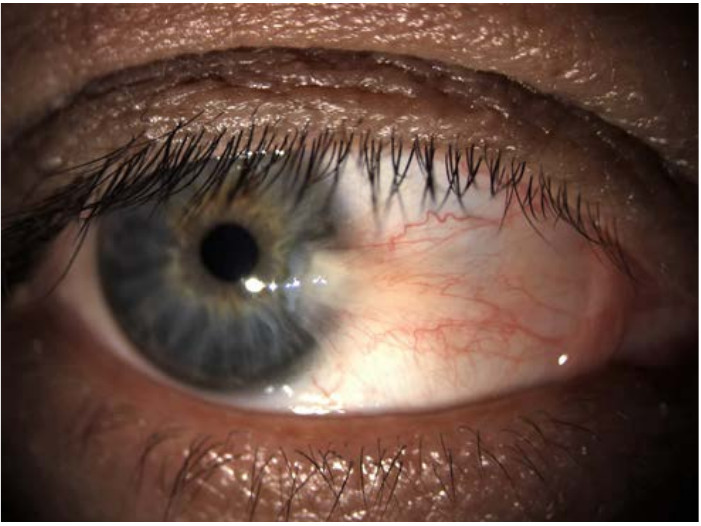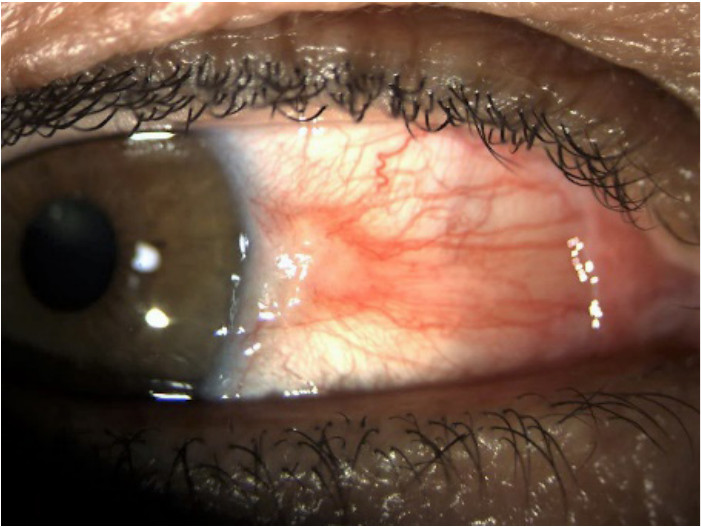8.2 Is the Sunlight Harmful to the Eye in the Context of Water Sports?
Why is the sunlight harmful to the eye?
Ultraviolet (UV) radiation is the main responsible for eye damage by radiant energy. Of all the light energy that rains down on Earth, less than 10% is UV radiation. UV radiation is invisible to the human eye and is subdivided into three categories: UV-A (400-320 nm), UV-B (320-280 nm) and UV-C (280-220 nm)1.
The ozone layer filters out part of the UV light that arrives from the sun, absorbing the smallest wavelengths more effectively (UV-C).
The UV radiation that reaches the Earth is composed of about 95% UV-A and 5% UV-B2. Most UV radiation that reaches our eye is absorbed by the anterior structures of the eye, namely the cornea. This prevents UV light from reaching the most posterior structures of the eye, namely the retina, which is extremely photosensitive.
Several studies, as well as clinical experience, suggest that UV-B is the most harmful, probably because of its higher level of energy3.
UV-B is mostly absorbed by the cornea, and less by the lens, causing damage to these tissues, but rarely reaching the posterior segment.
UV-A radiation has lower energy, but penetrates much deeper into the eye and may also cause eye injury3.
Is the light reflected by the sea and other surfaces even more harmful?
Like visible light, UV light is reflected off surfaces, in a variable percentage depending on the surface: the snow can reflect about 80 to 94% of UV-B radiation, the foam of the sea about 25%, the white sand of the beach about 15% and seawater reflects between 5 to 8%.
What happens in these environments is that, reflected UV radiation is added to the incident UV radiation, enhancing exposure to the total UV radiation.
The greater the proximity to the reflecting surface, the greater the exposure of our eyes to reflected radiation.
We conclude that although direct sunlight is harmful to the eye, the reflected UV rays can be even more, because we are looking down and around (exposure to reflected radiation) more often than we are looking up, directly at the sun (exposure to direct radiation)4,5.
Who is more vulnerable?
The most vulnerable groups to the harmful effects of UV radiation are the most exposed individuals (outdoor work and leisure time, including water and snow sports), older individuals (whose photoprotective mechanisms may be impaired), lightly pigmented individuals (lighter iris), aphakia, and users of photosensitizing drugs (such as phenothiazides, psoralens, allopurinol, tetracyclines and hematoporphyrins).
The levels of radiation exposure are higher in the summertime, in areas near the equator and in higher altitudes5.
What ocular injuries may arise from long periods in the sea?
Individuals who spend a lot of time at sea (especially water sports) are highly exposed to UV radiation. Several ocular pathologies may be caused or worsened by exposure to UV radiation, especially by UV-B wavelengths.
Acute exposure to high levels of UV radiation, in the context of water sports (surf, sailing, kitesurf, etc.) induces a temporary photochemical lesion in the keratotic cells, called photokertitis2, also known as ultraviolet burn.
Symptoms appear a few hours after exposure, with tearing, foreign body sensation, blurred vision, pain, and intense photophobia, presenting with conjunctival hyperemia and superficial punctate keratitis4 (Fig. 1).
Treatment includes ocular occlusion with antibiotic ointment for a minimum of 24 hours.
Chronic exposure to UV radiation is clinically and epidemiologically more important than acute exposure.
The cornea absorbs most UV radiation, not only from direct irradiation but also from oblique rays.
UV-B radiation induces oxidative stress and damages corneal epithelial2.

Fig. 1: Superficial punctate keratitis, slit lamp photography with fluorescein dye.
Pterygium (Fig. 2) is a benign degenerative growth of fibrovascular tissue in the cornea and conjunctiva1,6.
It arises more frequently on the nasal bulbar conjunctiva, a fact that can be explained by the incidence of oblique rays, preferably in this region of the eye2.
It presents with irritation and foreign body sensation, and, in advanced stages, it can interfere with vision by inducing astigmatism and even cause mechanical restriction of eye movement.
The treatment may be medical (including topical lubricants and steroids in case of inflammation) and/or surgical1,6.

Fig. 2: Left eye nasal pterygium, slit lamp photography
Pinguecula (Fig. 3) is similar to pterygium, but does not reach the cornea. It is usually asymptomatic, but it may become inflamed and reddish1.

Fig. 3: Right eye nasal pinguecula, slit lamp photography.
Cumulative exposure to UV radiation is also pointed as a risk factor for ocular surface squamous neoplasms in predisposed vulnerable individuals7.
Ocular surface squamous neoplasms are a group of entities characterized by abnormal growth of dysplastic squamous epithelial cells on the ocular surface. The presentation is variable, but more frequently the patient presents a gelatinous or white/gray plaque lesion on the interpalpebral conjunctiva. The treatment may be medical or surgical, depending on the duration, recurrence, and previous treatments7.
High exposure to ultraviolet radiation also increases the frequency of skin tumors of the eyelid region, accelerates the development of cataracts (particularly the cortical type) and the risk of age-related macular degeneration1,2,4.
What can I do to prevent injuries caused by UV radiation?
The best way to prevent injuries is by using an ultraviolet filter, which can be incorporated into spectacles and contact lenses.
UV radiation reaches the eye not only by direct incidence but also by reflected rays off the surfaces around us. Hydrophilic contact lenses with UV filters are very effective in protecting the cornea and limbic cells from penetration of UV rays (even the oblique ones), but because they are very close to the eyeball, they do not protect adjacent areas, such as the eyelids and skin of the periocular region.
Sunglasses provide a largest area of coverage, but allow for the penetration of some laterally reflected rays, that’s why choosing models with a wider wraparound design will provide greater protection.
When using sunglasses with darker lenses, a complete and effective UV filter must be ensured, since the pupil dilates and allows the penetration of harmful light and radiation that has not been blocked.
The use of lenses that absorb between 99 and 100% of UV radiation (UV-A and UV-B) is extremely important2,3 .
A wide-brimmed hat or cap will further block about 50% of UV radiation reaching the eye, reducing UV radiation that may enter from above or around the glasses3.
In addition to UV filters incorporated into lenses, there is a molecule with proven UV-B filter activity, actinoquinol.
There are artificial tears that incorporate this molecule and offer lubrication with additional UV-B protection8.
Prevention can also improve our body’s response to injury.
The antioxidant defense system, the lens and retina, include vitamins C and E, lutein and zinc.
A high intake of these nutrients can increase our defenses and the ability to respond to radiant energy injuries.
Supplements are proven beneficial in age-related macular degeneration (AMD), and omega-3 fatty acids also showed a beneficial effect on AMD, and dry eye disease9.
And what about the eye trauma, is it frequent in water sports?
Eye trauma during sports is an important cause of vision loss.
Watersports, particularly those with surfboards (eg. surf and bodyboard), have a well-documented risk of potentially disabling eye and face trauma10.
All parts of the board can cause injury, but the most serious cases are associated with the sharp nose of the board, which, due to its pointed shape, can penetrate the orbital bone, transmitting large energy levels to the eyeball.
The leash, which allows the surfer to keep the board close and avoid injury to other surfers, also contributes to the trauma mechanism by keeping the board close at the time of impact.
The resulting trauma may vary in severity, but severe cases with ruptured globe and important lesions to the posterior segment are described and present poor visual prognosis11.
Is there a way to prevent eye trauma?
The best way to prevent ocular trauma is using eye protection10,11.
Spectacles suitable for water sports are designed to float, cover the entire periocular area, resist impact, and incorporate UV filters and optical correction.
However, the percentage of people practicing these sports, namely surfers, who use this type of protection is very low.
Other forms of prevention have been discussed, for example by changing the shape of the boards and/or length of the leash11.

